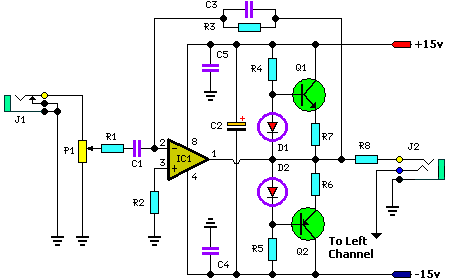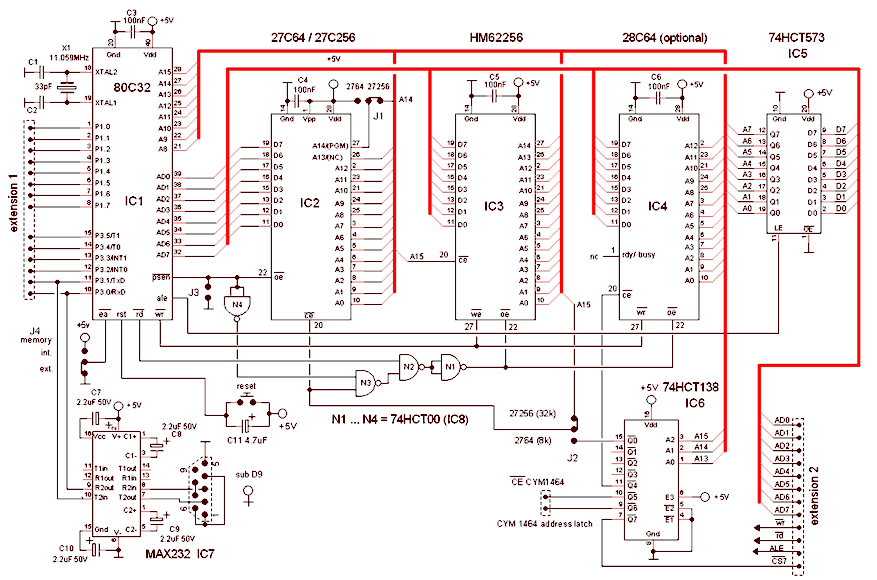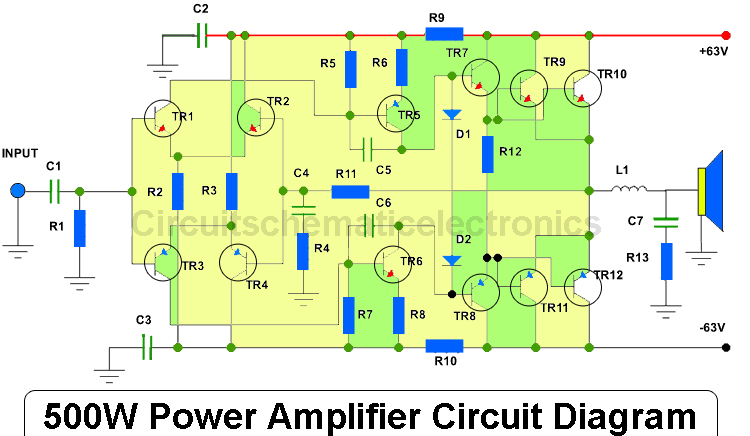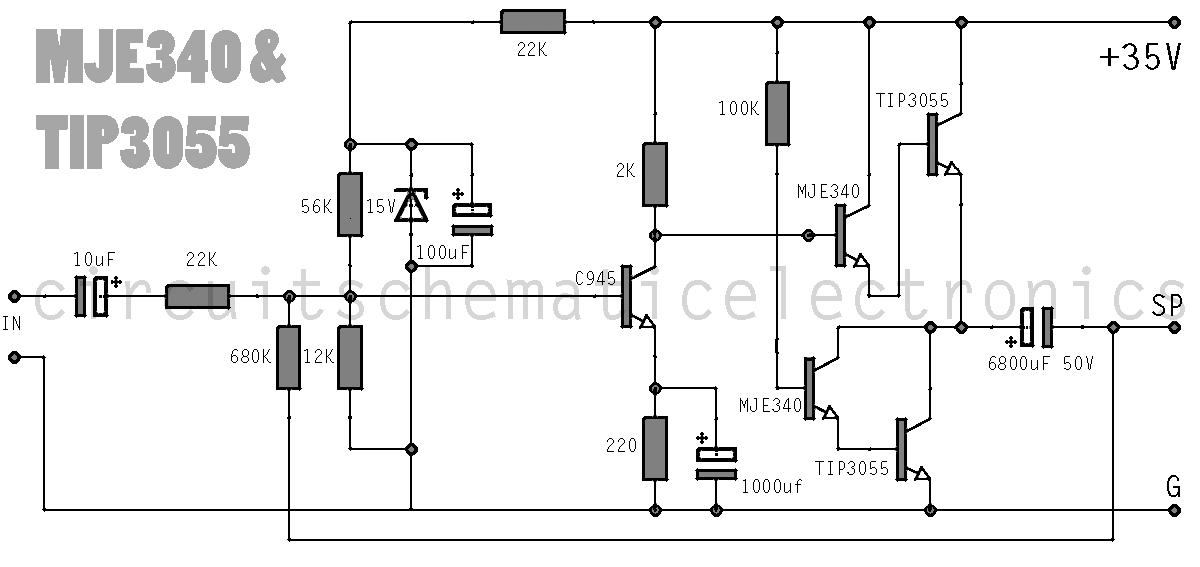
Stereo Tube Amplifier
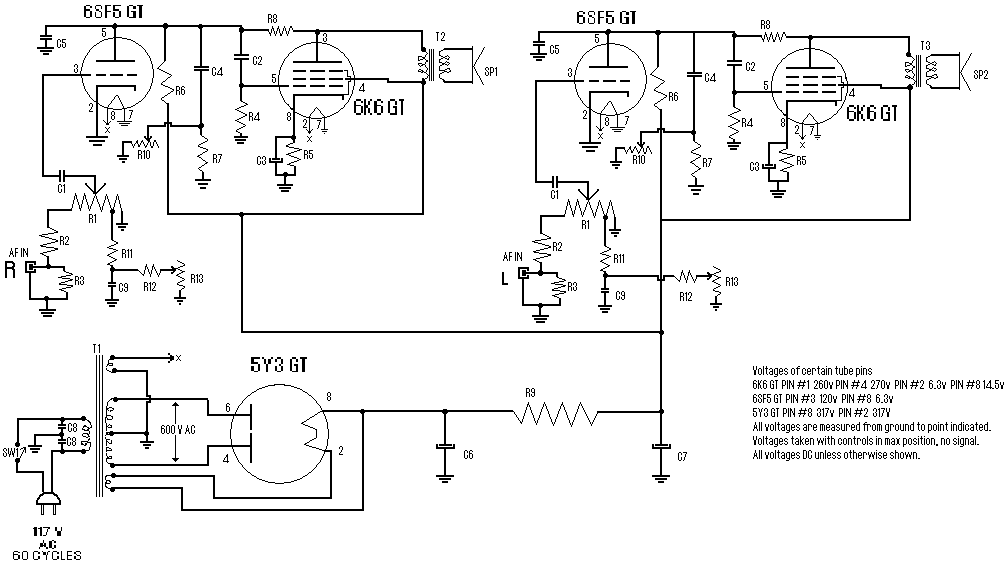
The circuit is straightforward yet capable of excellent performance. It has been specifically designed for use as an amplifier for the digital sound card in a computer. Audio input can be sourced from any two-channel line-level device such as a television, CD player, or VCR. The circuit employs a tube design, utilizing a total of five tubes with a power consumption of no more than approximately 45 Watts from the outlet. It incorporates three types of tubes: one 5Y3 GT vacuum rectifier, two 6SF5 GT high-mu triodes, and two 6K6 power beam amplifiers. All of these tubes are full-size octal types, which are readily available today at a price range of $3-5 each.
The described circuit functions as a tube amplifier, specifically optimized for enhancing audio signals from various two-channel line-level sources. The 5Y3 GT vacuum rectifier serves as the power supply component, converting AC voltage from the mains to DC, which is essential for the operation of the amplifier. This rectifier is known for its reliability and smooth output, ensuring that the subsequent amplification stages receive a stable power supply.
The two 6SF5 GT high-mu triodes are employed in the pre-amplification stage. These tubes are characterized by their high gain, making them ideal for boosting weak audio signals before they reach the output stage. The configuration of these triodes can be set up in a differential amplifier arrangement to improve noise rejection and enhance the overall audio fidelity.
In the output stage, the two 6K6 power beam amplifiers are responsible for driving the connected speakers. The 6K6 tubes are known for their efficiency and musicality, allowing for a rich and warm sound characteristic that is often sought after in audio applications. The design ensures that the total power consumption remains within the limit of 45 Watts, making it suitable for home use without excessive energy draw.
The entire circuit, utilizing full-size octal tubes, benefits from the availability of replacement components, ensuring long-term maintenance and ease of repair. The cost-effectiveness of the tubes, priced between $3-5 each, further enhances the feasibility of building and maintaining this amplifier. Overall, this circuit offers an excellent balance of performance, efficiency, and accessibility for audio enthusiasts looking to enhance their digital sound card output.The circuit is simple, yet is capable of excellent performance. I designed it specifically for use as an amplifier for the digital sound card in my computer. Audio input can be from any two-channel line level device such as a television, CD player, or VCR. It is of the tube type, using only 5 tubes total with no more than about 45 Watts power cons umption from the outlet. It uses 3 types of tube 1 5Y3 GT vacuum rectifier, 2 6SF5 GT high-mu triodes, and 2 6K6 power beam amplifiers. These are all full-size octal type tubes which are commonly available today for between $3-5 each. 🔗 External reference
The described circuit functions as a tube amplifier, specifically optimized for enhancing audio signals from various two-channel line-level sources. The 5Y3 GT vacuum rectifier serves as the power supply component, converting AC voltage from the mains to DC, which is essential for the operation of the amplifier. This rectifier is known for its reliability and smooth output, ensuring that the subsequent amplification stages receive a stable power supply.
The two 6SF5 GT high-mu triodes are employed in the pre-amplification stage. These tubes are characterized by their high gain, making them ideal for boosting weak audio signals before they reach the output stage. The configuration of these triodes can be set up in a differential amplifier arrangement to improve noise rejection and enhance the overall audio fidelity.
In the output stage, the two 6K6 power beam amplifiers are responsible for driving the connected speakers. The 6K6 tubes are known for their efficiency and musicality, allowing for a rich and warm sound characteristic that is often sought after in audio applications. The design ensures that the total power consumption remains within the limit of 45 Watts, making it suitable for home use without excessive energy draw.
The entire circuit, utilizing full-size octal tubes, benefits from the availability of replacement components, ensuring long-term maintenance and ease of repair. The cost-effectiveness of the tubes, priced between $3-5 each, further enhances the feasibility of building and maintaining this amplifier. Overall, this circuit offers an excellent balance of performance, efficiency, and accessibility for audio enthusiasts looking to enhance their digital sound card output.The circuit is simple, yet is capable of excellent performance. I designed it specifically for use as an amplifier for the digital sound card in my computer. Audio input can be from any two-channel line level device such as a television, CD player, or VCR. It is of the tube type, using only 5 tubes total with no more than about 45 Watts power cons umption from the outlet. It uses 3 types of tube 1 5Y3 GT vacuum rectifier, 2 6SF5 GT high-mu triodes, and 2 6K6 power beam amplifiers. These are all full-size octal type tubes which are commonly available today for between $3-5 each. 🔗 External reference
%2B2%2BCH%2Bby%2BIC%2B%2BNE5532%2Bor%2BLF353.jpg)
